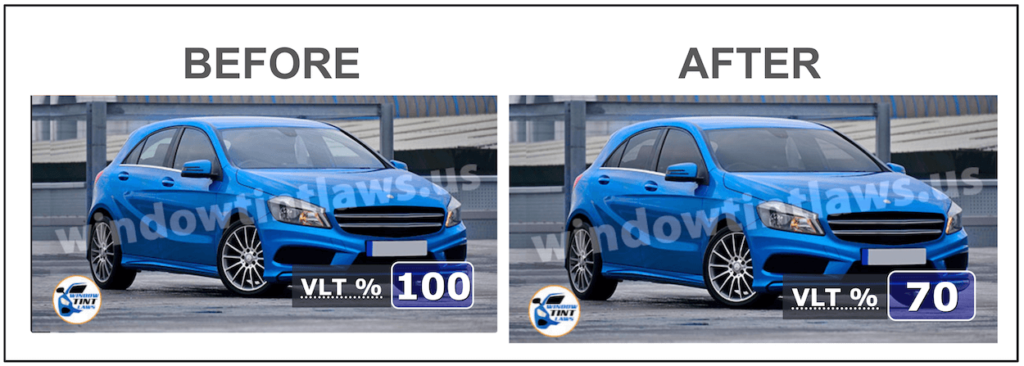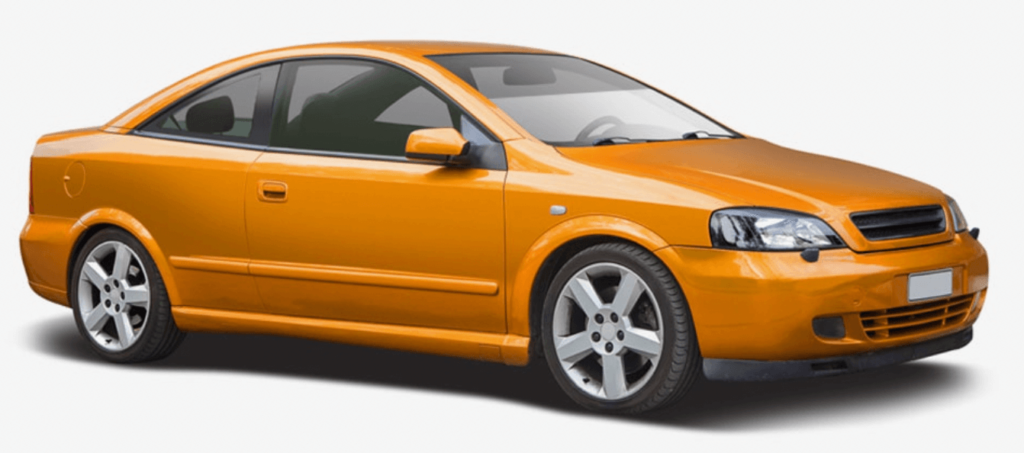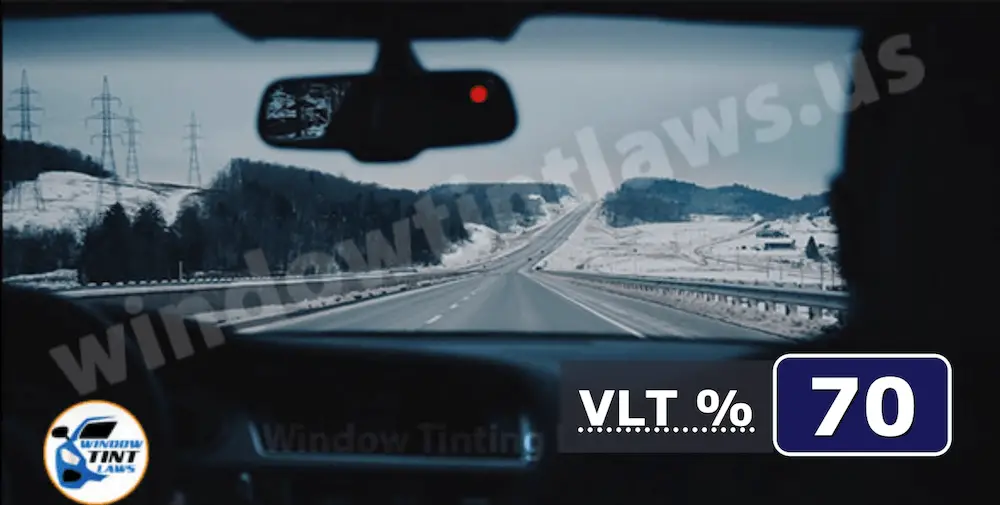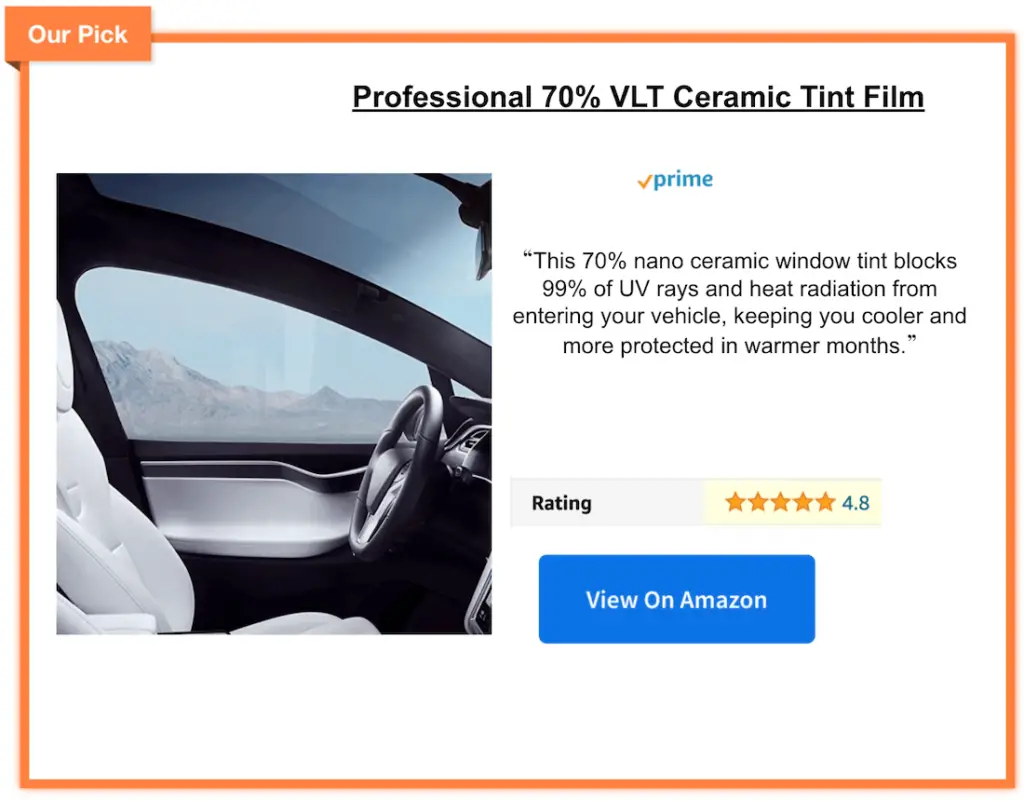Last Updated on January 2, 2024 by Alex Koch
70 PERCENT WINDOW TINT: PROS, CONS, AND WHERE TO BUY
Everything you should know about 70 window tint, Before & After photos, how the tint looks at night, and top brands to buy from.
WHAT DOES 70% TINT LOOK LIKE?
While it is not the lightest tint available, 70 percent tint is on the lighter end of the spectrum in terms of window film and will block out some UV rays and aid with privacy when trying to view inside the vehicle to a degree.
For the most part, you will be able to see directly in with little-to-no issue.
If you want to be sure you’re staying compliant with state tinting laws, 70% window tint is a great choice and is legal in any state that allows tinted windows. Check your state’s tint laws here.
70% window tint will block some UV rays and is legal in almost all U.S. states.
70 WINDOW TINT BEFORE AND AFTER PICTURE
Below is a before and after picture of a car that started with no window tint film and then added a 70% window tint so you can visualize the difference before and after the tint film was added.

You can purchase 70 percent tint in various colors to match your vehicle.
Below is an example photo of a car with 70% window tint applied to it.

Interested to learn more about other tint percentages?
HOW DARK IS 70% TINT COMPARED TO OTHER TINT PERCENTAGES?
70 percent tint is more often applied at the factory or if the dealer wants a small layer of reduced visibility on their cars. Most private owners do not select 70 tint because it does not make the tint that much darker.
It is legal to install 70% window film on the driver’s side and front passenger windows in most states.
70% achieves some balance between blocking out the light and but overall, the car will still be easy to see into and only provide limited protection from UV rays.
70 tint is very popular for cars coming from a dealership, however, it could potentially not be enough privacy or tint-darkness for many drivers.
You can see in the picture below the VLT of several tinting options including 70% window tint as well as 5%, 35%, and 50%
CAN YOU SEE THROUGH 70% TINT AT NIGHT?
You can see through 70 percent window tint at night when you are inside the vehicle. If you are outside of the vehicle you can also see into a car with 70 tints installed fairly easily, even if you are over 10ft away.
Tinting professionals will tell you that 70 percent window tint is a poor choice to pay for, considering the car will not look too much different from its current state.
Twenty percent is approximately the darkest you can tint your windows and still see clearly on a gloomy night. 70 tint should not impact your visibility while driving.
If you have poor vision, driving at night with seventy percent window tint will be ok, even if with less than perfect vision.
A dark night combined with dark window film can result in a severe lack of visibility.

HOW MUCH DOES 70% TINT COST?
Installing 70% window tint on your vehicle may range from $125 to 5650 for standard, non-reflective tint film.
If you want ‘the good stuff‘ your range will be closer to $200 to $625 for a more premium tint film, such as what you get with ceramic, carbon, or other specialized films.
Expect to spend extra on a vehicle with a larger number of windows.
If you need to remove your tint for whatever reason, you will have to pay for this service as well. This can cost anywhere from $25 to $200 or more. As you can see, a variety of factors will determine the price you’ll pay for 70% tint.
You can check pricing for 70 window tint rolls here.
70 WINDOW TINT VS 20
We are talking about very different films. There is a 50% difference in visible light transmittance.
You can see through 70 window film easily, even if you are not close to the car, however, 20 tint can be rather difficult to see through at times, even if it is light out.
It will be tricky to see inside the window with 20 tint, while 70 tint will not be challenging. 70 tint is easier to see into than 20 tint.
There are several differences here, including a legal one, more U.S. states allow 70% film than 20 tint. However, 20 percent tinting is preferable to 70 percent tint for drivers looking for an added touch of privacy and just an overall darker-looking tint.
THE BEST 70 WINDOW TINT TO BUY:
OUR TOP CHOICE FOR 70% WINDOW TINT IS THE MOTOSHIELD PRO

FINAL THOUGHTS:
A 70 percent film is going to block out some UV light but not much. It will have minimal impact on providing additional privacy in the car, most people will be able to see inside.
The lighter shade look that comes with 70 tint is common when purchasing a car from a dealership or after-market sales center. 70% window tint is not illegal in your state.
Remember, the optimal percentage for your windows is determined by your reasons for tinting them in the first place.
